How To Prep for a Perfect Paint Job
A systematic approach to masking, priming, sanding, and painting eliminates imperfections for a smooth painted finish.
Sponsored by Sherwin-Williams
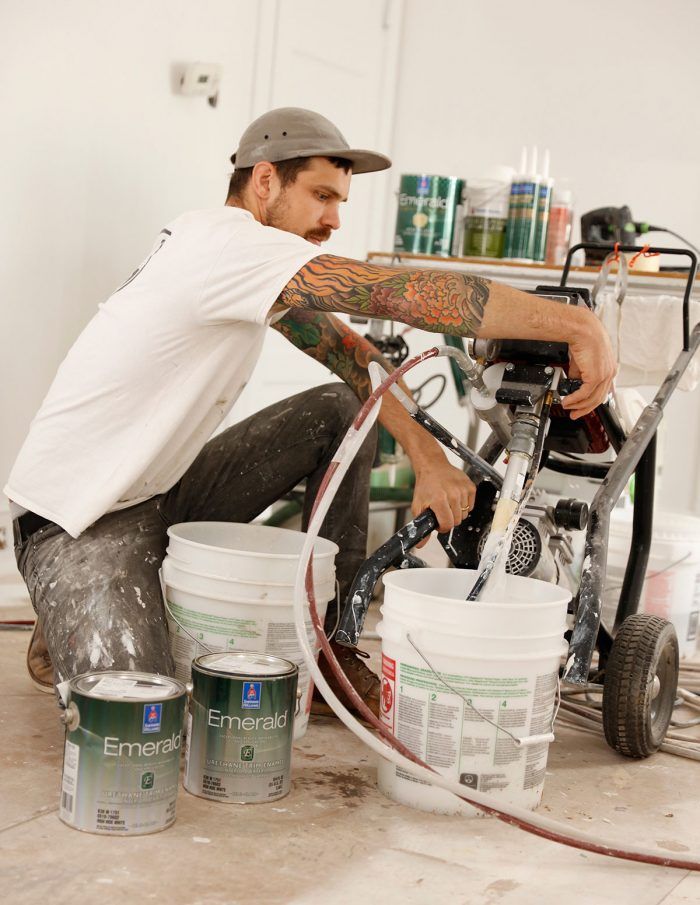
When it comes to a beautiful, durable interior paint job, there’s no single trick or shortcut—it’s a combination of choosing quality paints and being careful and meticulous about the preparation. For remodeler Tyler Grace of TRG Home Concepts, a perfect paint job is critical to his client’s happiness. Here’s a look at the system of preparation and application he’s developed to ensure a high-quality, flawless finish. Tyler uses Sherwin- Williams Emerald Designer Edition™ paint on the walls because it’s a premium paint formulated with advanced washability to protect color and sheen for years, and it leaves a smooth, uniform result. As much as materials matter, a truly flawless finish on your woodwork and walls also requires a healthy supply of sandpaper, some filler and caulk, and a lot of repetition. Tyler rolls the walls and uses a sprayer to paint the trim, but the process of preparing between each coat of primer and paint is the same whether using a brush or a sprayer—ensure the surface is smooth, evenly covered, and dust-free before applying the next coat.
Painting Trim
| 1. MASK AND PROTECT The first step of any painting project is to wash the trim and walls with a cleaner-degreaser to make sure no contaminant is left on the surface. Then, protect floors, windows, and other surfaces that shouldn’t be painted. Use painter’s tape to seal along the edges of all painted surfaces and create a crisp paint line, and use masking paper, film, and drop cloths to protect adjoining surfaces. |
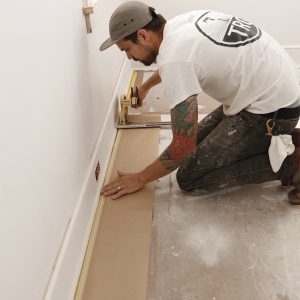 |
| 2. PRIME THE TRIM Before priming, sand the trim to remove any rough areas. Then, whether you use a sprayer or a brush, the goal is the same: an even coat of primer to prepare the surface for paint. For new wood, Sherwin-Williams Premium Wall & Wood Primer builds a body on the trim for spackle, caulk, and paint to adhere to. |
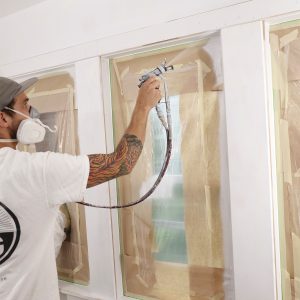 |
| 3. FILL, SAND, AND VACUUM Fill nail holes, dings, and joints in trimwork with Sherwin-Williams Shrink-Free™ Spackling applied with a fingertip or putty knife. Use two coats and slightly overfill holes, sanding them flat afterward. Hit each joint in the trimwork with the sandpaper as well to make sure the surfaces are flush. After sanding, vacuum all surfaces. Caulk all changes in plane on the wall—such as baseboards and casing to wall, casing to window, etc.—using a flexible caulk with excellent adhesion, like SherMax™ Urethanized Elastomeric Sealant, so gaps don’t open up over time. |
 |
| 4. REPEAT Spray the woodwork with a second coat of primer and lightly sand with fine-grit sanding sponges to achieve as smooth and even a base as possible. Vacuum thoroughly before moving on to the painting stage. |
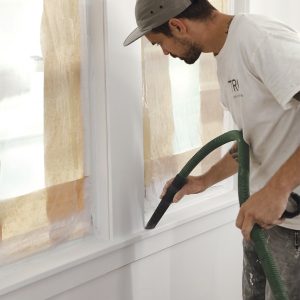 |
| 5. PAINT, SAND, PAINT Painting the trim mirrors the priming process: two coats of the finish paint—Emerald Urethane Trim Enamel—with fine-grit sanding and a vacuuming between the coats. Work systematically and carefully to achieve complete, even coverage. |
 |
Painting Walls
| 1. PRIME AND SAND If this is a new project, roll the walls with a coat of primer before installing trim in the room to eliminate cutting in around doors, windows, and baseboard. Check for and repair any dings in the wall from the trim install. After the trim is painted, knock down the first primer coat on the walls with 220-grit paper on a sanding disk. |
 |
| 2. CLEAN UP THE OVERSPRAY When spraying paint, there’s a fair amount of overspray, and with two coats of primer and two coats of paint there will be buildup on the walls adjacent to the woodwork. Before the second coat of primer goes on the wall, use a small finish sander to take down the overspray and get in tight to the trim. |
 |
| 3. CUT IN AND ROLL Use a brush to cut in the primer along the edges of the walls, and then roll the walls. |
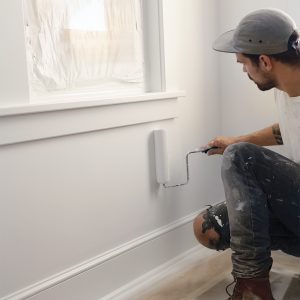 |
| 4. SAND AND REPEAT, TWO MORE TIMES First comes a light sand with the sanding disk to knock down the walls after the second coat of primer and a thorough cleaning with the vacuum, and then it’s time to paint. Apply two coats of Emerald Designer Edition™ on the walls, cutting in with the brush and rolling the field each time and sanding and vacuuming between the first and second coats. |
 |
WARNING: If you are working in a home built before 1978, please follow lead-safe remodeling guidelines during any painting projects or other remodeling jobs.


























View Comments
Stripping wood trim and doors often involves old, lead-based paint as WARNING above. The Speedheater™Infrared Paint Removers do this dangerous job faster, cleaner, and safer than liquids and sanding.